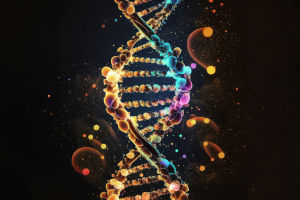Monozygotic twins have long been considered the epitome of genetic sameness.
Derived from a single fertilized egg, these individuals share virtually identical DNA sequences.
However, recent advancements in genomic medicine and molecular epigenetics challenge the long-held belief in their absolute genetic equivalence. Clinical observations, ranging from discordant disease presentations to variable drug responses, underscore the need to reexamine what "identical" truly means in medical terms.
Post-Zygotic Mutations: Divergence Begins Early
Shortly after the zygote splits, subtle DNA alterations can begin to emerge in each embryo. These post-zygotic mutations such as single nucleotide variants (SNVs) or copy number variations (CNVs) can accumulate independently, creating measurable genomic distinctions between the two individuals.
Dr. Hákon Jónsson and colleagues identified an average of 5.2 early genetic mutations in one twin but not the other among over 380 monozygotic twin pairs. These mutations, while few, can impact gene expression in ways that manifest clinically, especially in areas such as neurological development and immunological function.
Epigenetic Drift and Environmental Modulation
Even without changes to the DNA sequence itself, epigenetic modifications play a major role in shaping phenotypic differences. Factors such as DNA methylation, histone acetylation, and microRNA expression can diverge significantly between twins over time.
Dr. Manel Esteller's states that by middle age, monozygotic twins displayed marked differences in DNA methylation patterns, particularly in genes involved in metabolic and inflammatory regulation. Environmental inputs such as diet, toxin exposure, and psychological stress contribute heavily to these epigenetic shifts.
Discordance in Disease Expression: Clinical Implications
Medical literature is replete with cases of identical twins exhibiting discordant disease outcomes, including autoimmune disorders, neurodevelopmental conditions, and malignancies. For example, while one twin may develop type 1 diabetes by age 10, the other may remain unaffected well into adulthood or indefinitely.
This divergence suggests that genetic predisposition alone is not a deterministic predictor. The gene-environment interaction, modulated by stochastic biological processes, introduces variability even in genetically matched individuals. This phenomenon holds profound implications for precision medicine, where genetic screening may fail to predict disease in one twin despite its presence in the other.
Microchimerism and Cellular Exchange
A lesser-known but increasingly studied aspect of twin biology involves microchimerism, where cells are exchanged between twins in utero. These cells, though few in number, can integrate into various tissues and exert biological influence sometimes decades later. A recent study suggest that microchimeric cells may affect immune reactivity or local gene regulation, adding yet another layer of individuality between twins.
Personalized Medicine: Rethinking Genetic Cloning Assumptions
The persistence of phenotypic discordance among monozygotic twins has direct ramifications for genetic counseling, disease modeling, and therapeutic interventions. In drug metabolism studies, even twins with matching pharmacogenomic profiles can respond differently to certain compounds due to differential gene expression or epigenetic regulation.
This observation challenges the use of monozygotic twins as absolute genetic controls in clinical research and suggests that even within the realm of shared DNA, personalized medical strategies remain essential.
The belief in genetic sameness among identical twins has been medically revised. Accumulated evidence confirms that epigenetic divergence, early somatic mutations, and environmental exposures all contribute to biologically meaningful differences. As medicine advances toward more precise and individualized approaches, understanding the nuanced variability within monozygotic twins is not just scientifically interesting—it is clinically vital.


